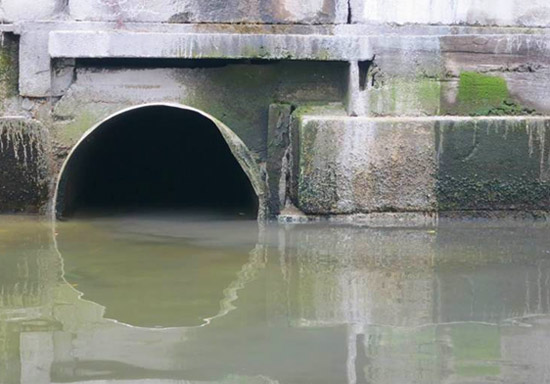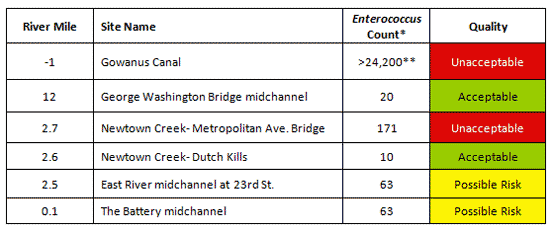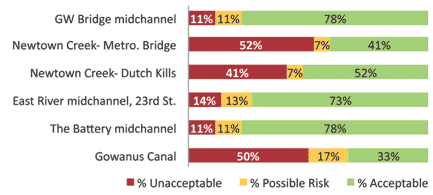Last Friday, Riverkeeper conducted our first patrol of New York Harbor since Sandy. The water quality conditions "looked" really good, better than average, at all sample sites except the Gowanus Canal. There, the water was grey and opaque, which is often the case when high levels of sewage contamination are present.
Sewage contamination levels at 6 of our standard sampling sites on 11/2/12
** >24,200 indicates a concentration of sewage that exceeds our lab’s range of measurement. When compared to our historic sampling data for these same locations it’s pretty clear that although we expect that combined sewer overflows (CSOs) were discharging, the extra volume from storm flooding (dilution) resulted in temporarily lower sewage concentrations than we have often observed at these locations, especially after storms. We measure much worse regional contamination during run-of-the-mill summer rainstorms than we found after Sandy. Historic contamination levels at these sites 2006 – 2011
Both the Newtown Creek sampling sites fail frequently and sometimes by HUGE margins. Gowanus Canal, the other Super Fund site we sample, also fails frequently and at times by huge margins. The three very high tides which occurred during the storm (Monday morning through Tuesday midday) brought unimaginable amounts of clean sea water into New York Harbor and appear to have “flushed” the entire harbor, including the sewage contamination released by CSOs and any pump station and sewer plant failures that occurred. The extreme contamination in the Gowanus Canal is probably due to additional, perhaps ongoing, sewage discharges from CSOs or bypasses into the Canal continuing after the tidal flooding ended. Riverkeeper is also concerned about the chemical, petroleum and floatable pollution (such as plastics) that undoubtedly entered the river, harbor and ocean as a result of the tidal flooding and subsequent “flush.” Learn more about Riverkeeper’s Water Quality Program:
© Riverkeeper 2012 |
|
|
|
|





